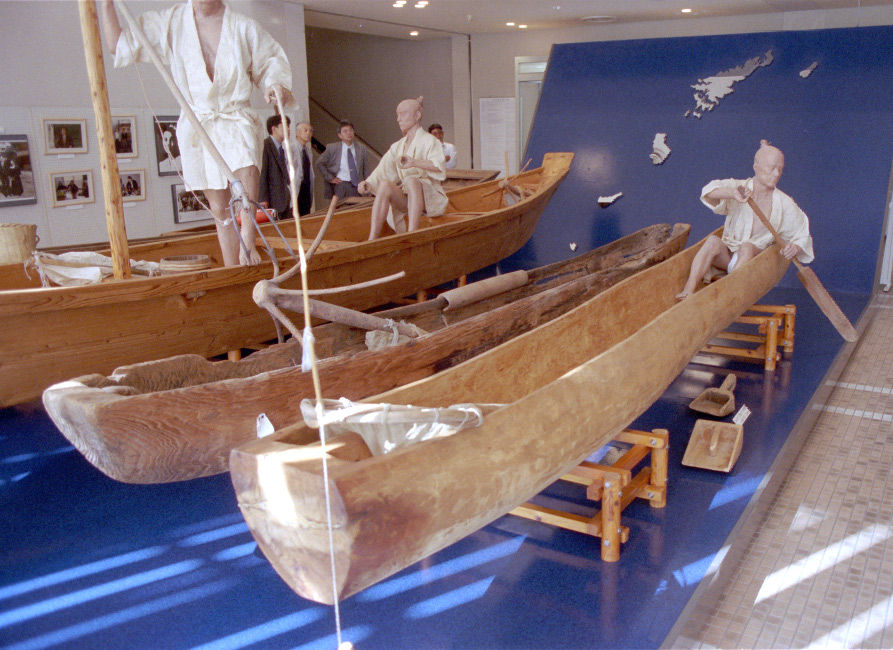
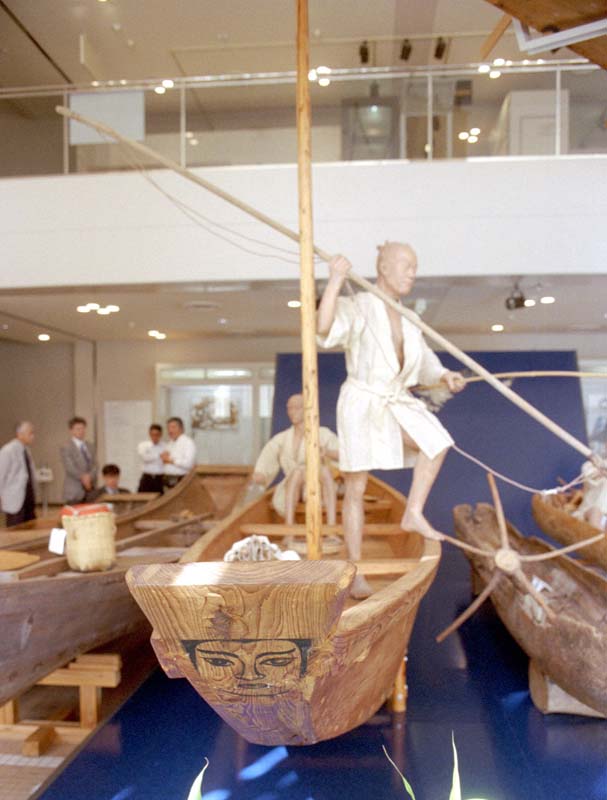
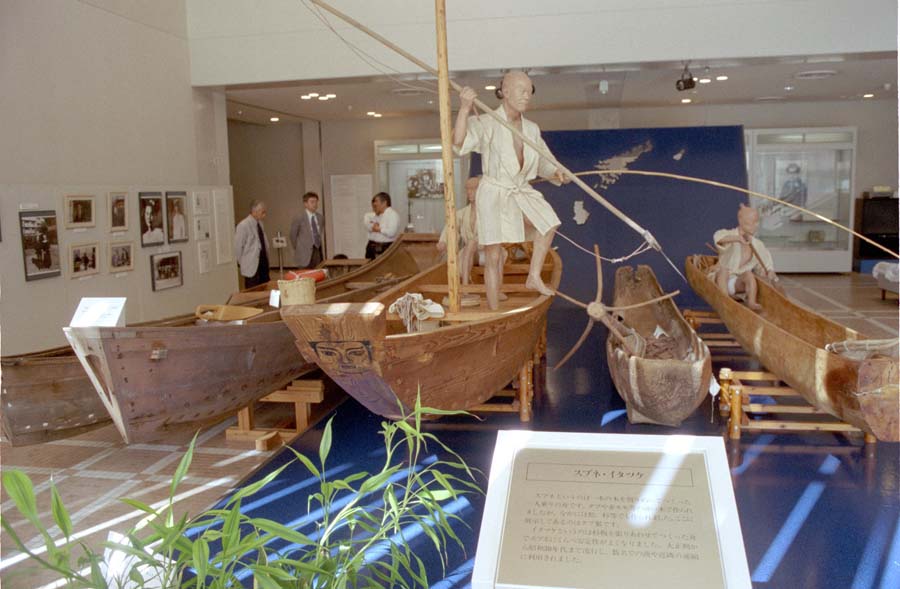
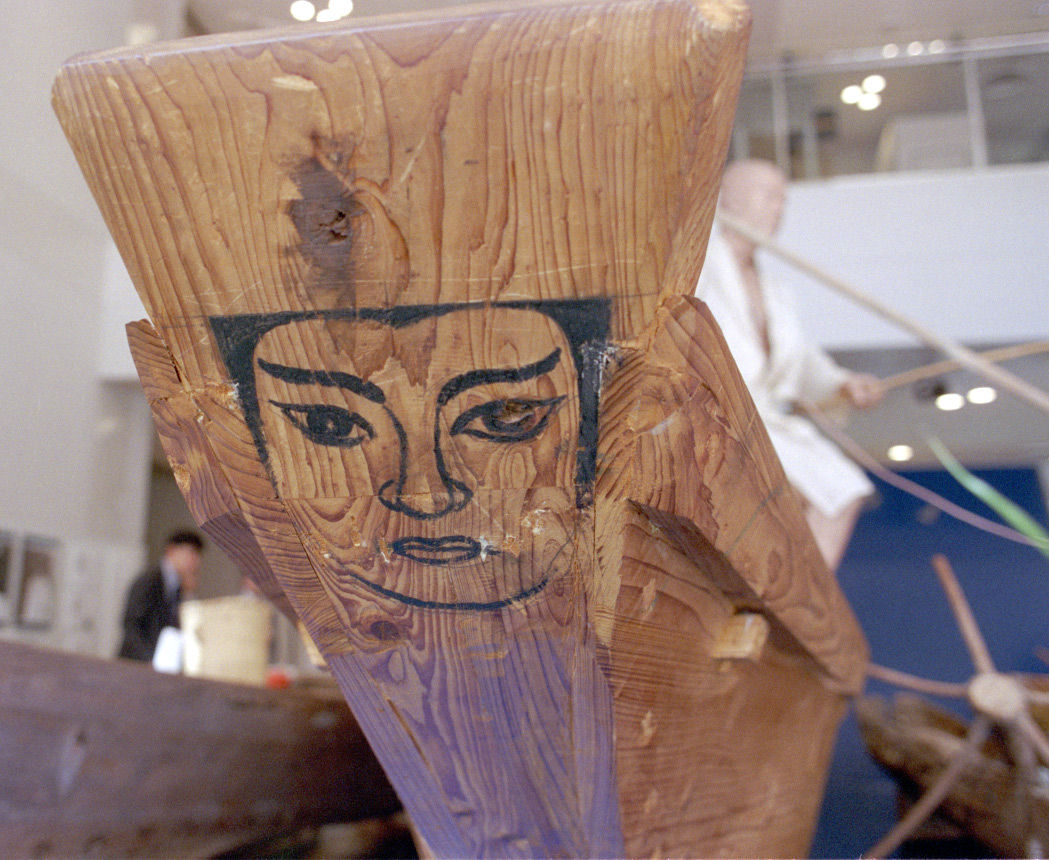
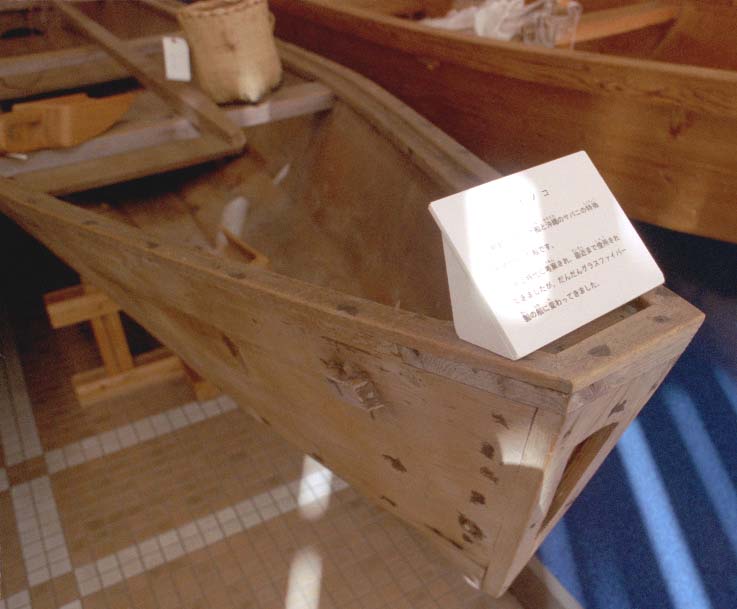
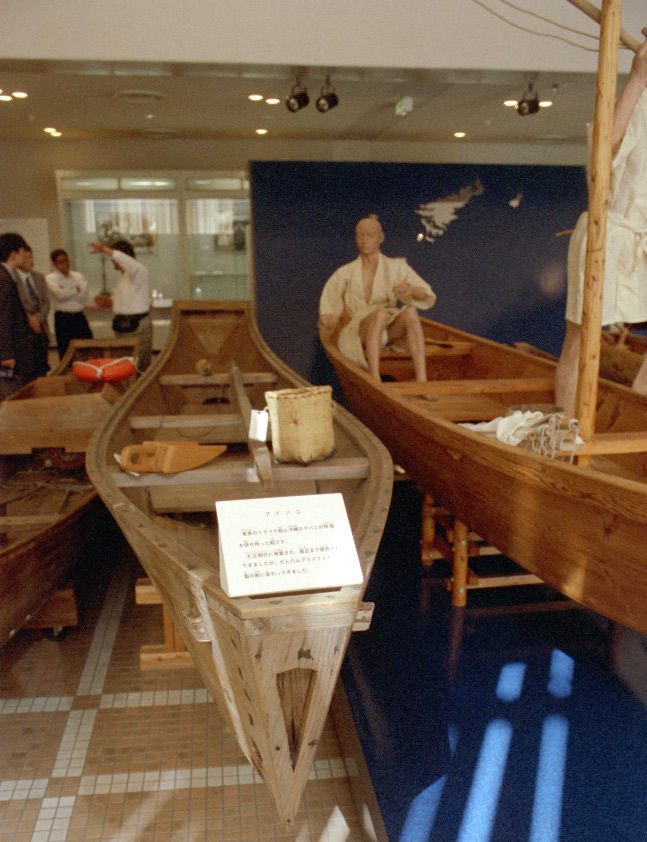
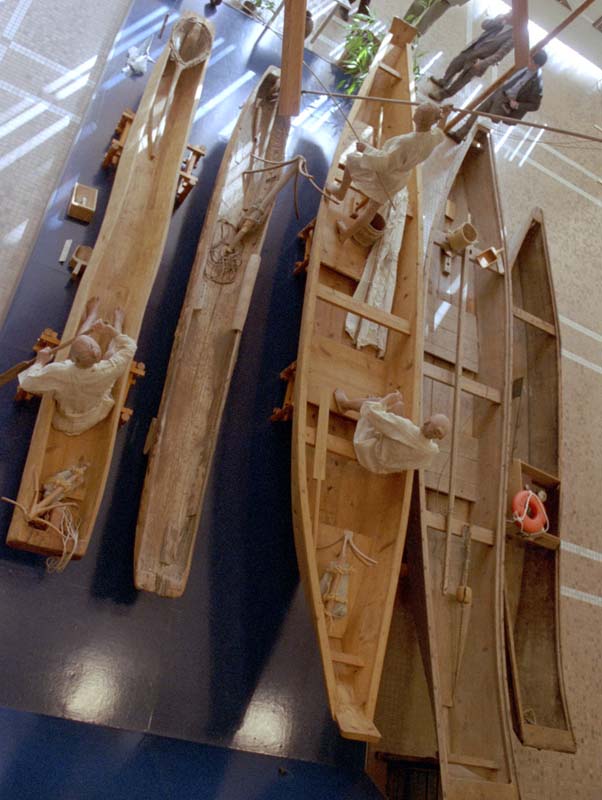
See picture1. These canoes is called Subune. Subune means plain, simple canoe. There are 2 Subunes in this museum. Newly built Subune on our side and original Subune collected by the museum on other side.
See picture 2 and 3. The canoe beside Subunes is called Itatsuke. As I described yesterday’s entry, Itatsuke was used mainly for transportation. It has one mast and normally it rigs square sail. I wonder if it has crabcraw sail.
See picture 4. This is the face of Itatsuke. Can you remember the face of Kubaya (see yesterday’s entry)? Itatsuke and Kubaya have face in its bow. Therefore you can understand these canoes uses paddling, not rowing, Okey?
Let’s see picture 5 and 6. This canoe is called Ainoko. Ainoko means hybrid. In late 19th century or early 20th century, fishermen of Itoman (Okinawa’s very famous fishing community) came to Amami with their original sailing canoe, Sabani. Sabani has very less stability but has distinguished speed and maneuverability. Amami’s fishermen has handicapped in the ability of their fishing canoes. Then one master-builder of Itatsuke evolved Ainoko, the hybrid of Itatsuke and Sabani.
Ainoko mainly used by Fishermen in the south territory of Amami Islands. Now only two master-builders (Tsuboyama senior and his son) can build Ainoko. But recently researchers of Kagoshima University started to document the building technique of Ainoko with the help of Nippon Foundation.
Picture7 was took from above. Two Subunes, one Itatsuke, one Sailing Ainoko and the last is Engined Ainoko.
Sabani is reappraised recently by the people of Okinawa and the editors and writers of Tarzan magazine. Uchida Masahiro, most famous Sea Kayaking expeditor in Japan and one of the best friends (bradaaa) of Tiger Espere is an admirer of Sabani. He once had won the Sabani sailing race with Nainoa Thompson. Outrigger Canoe Club Japan had built double hulled Sabani (looks like double canoe of Polynesia) last year and sailed it from Okinawa to Aichi, captained by Araki Takuji. Araki used modern Hawaiian dead reckoning method in this voyage. He learned it on Hokule’a from Nainoa Thompson.
Subune, Itatsuke, Ainoko are all made of Sugi (Japanese Cedar) wood.
最初の二つの画像は「スブネ」と呼ばれる奄美の刳り抜き船です。次の三つの画像が「イタツケ」。顔がついていて可愛いですね。その次が「アイノコ」ですね。サバニとイタツケの合いの子という意味だそうです。現在アイノコを作れるのは名瀬在住の坪山豊さんとその息子さんだけだそうです。

